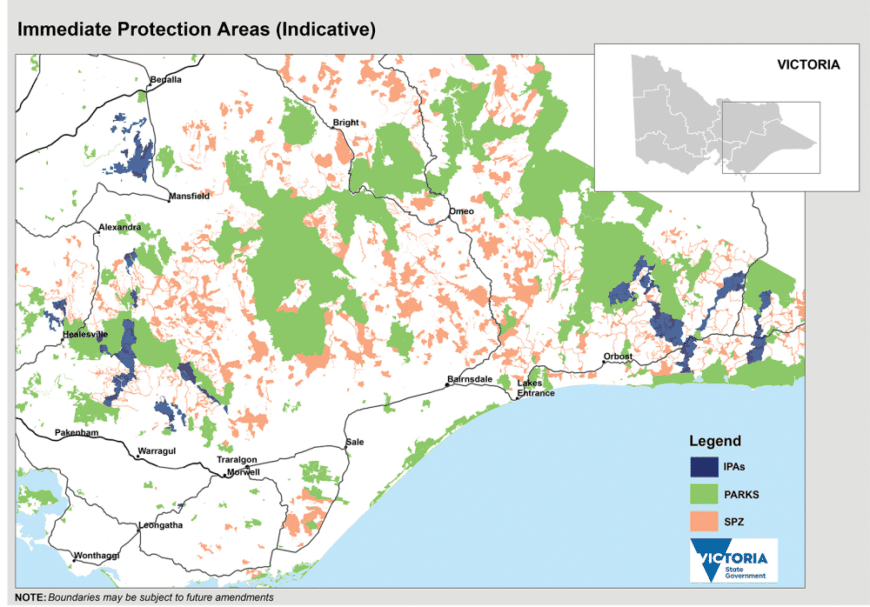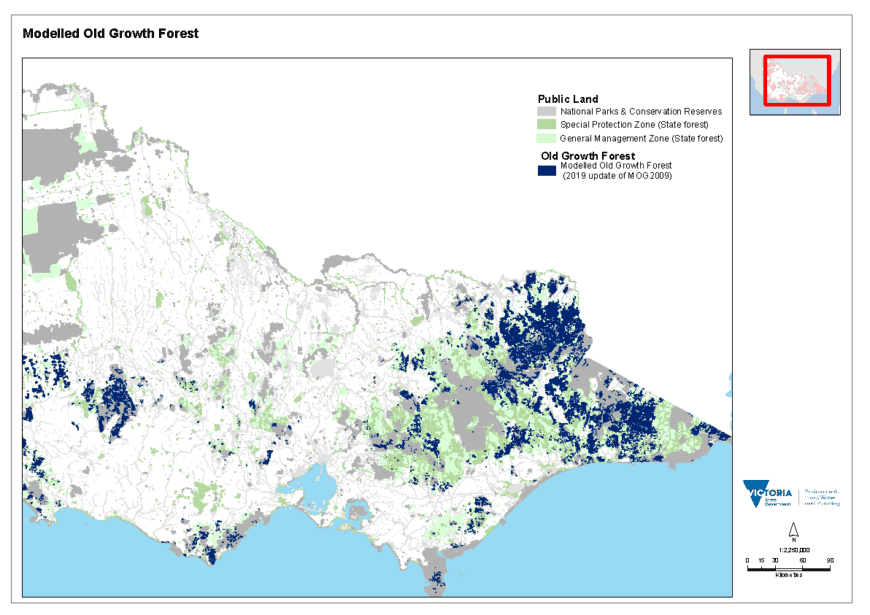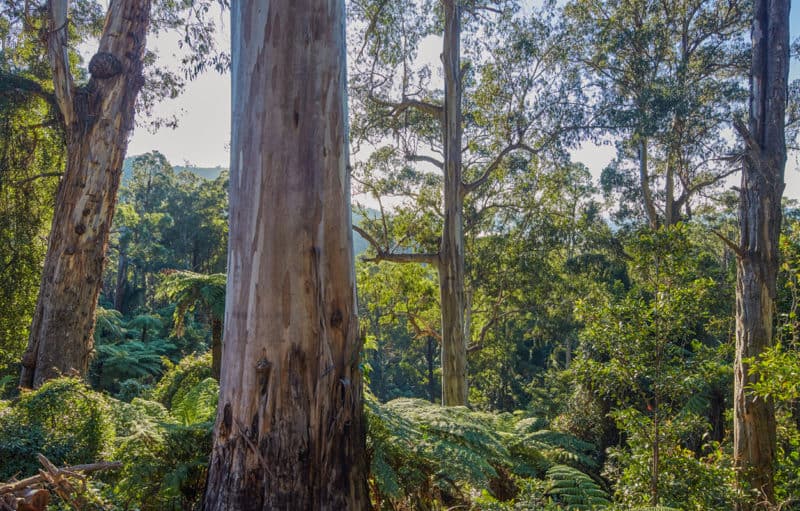Here we go into the detail about some of the Andrews Government’s forest announcement.
You can read our overview, including of the other commitments, on this page.
More detail on the commitment for Immediate Protection Areas for Threatened Species:
According to the Andrews Government:
“Harvesting will be immediately excluded from these areas to preserve important habitat for more than 35 forest dependent species, including the Greater Glider and Leadbeater’s Possum”.
This applies to more than 96,000 hectares of high conservation value forest through the creation of ‘Immediate Protection Areas’ in the Strathbogie Ranges, Mirboo North, Central Highlands, and East Gippsland.
The government’s indicative map of the Immediate Protection Areas is available here:
These ‘Immediate Protected Areas’ have no legislative basis as yet.
They are essentially a political commitment, which will need legislation or regulation to be properly secured into the future. A consultation process will commence early next year on “the best way to permanently protect the Immediate Protection Areas”.
Greater Glider populations have declined by 50 per cent in the last 20 years in East Gippsland and up to 80 per cent in the Central Highlands. An Action Statement for the Greater Glider has also been released as part of this announcement; alarmingly it applies weaker ‘forestry rules’ to Greater Gliders than already existing protections.
The indicative mapped areas in the Central Highlands are good for the Greater Glider habitat, and overlap in part in with critically endangered Leadbeater’s Possum habitat, but leave significant habitat areas for thit species outside the Immediate Protection Areas. Large areas of mountain ash forest will continue to be heavily logged at least to 2024, raising concerns about this already depleted habitat. Areas identified in Immediate Protected Areas include protecting the connection between Baw Baw and Yarra Ranges National Park, and protecting Armstrong and Cement Creek Catchments, which could be an important consolidation of the Yarra Ranges National Park. Other areas include reserve buffers around the Ada Tree and some of the last parts of intact forest around Toolangi.
Over half of the proposed Immediate Protection Areas are in East Gippsland, which expands protection for the Kuark forest, includes some areas which build on the Snowy River National Parks, and extends protection south of the current boundary of Erinunderra National Parks. There are proposed links to Croajingolong National Park, which supports some the Emerald Link walking track proposal. Some of the most significant populations of Greater Glider around Bendoc and on Erinunderra plateau are still under direct threat. You can read a detailed breakdown from East Gippsland conservation groups here.
Around 17,000 hectares of Strathbogie forests is included in the Immediate Protected Areas. This is a great result for the hard work by Save Our Strathbogie Forest (SOSF) community campaign, which VNPA supported. Also proposed are further protection around areas of high local community interest around Mirboo North.
More detail on the commitment to end logging old growth:
According to the Andrews Government:
“Under the plan, 90,000 hectares of Victoria’s remaining rare and precious old growth forest – aged up to 600 years old – will be protected immediately”.
However, also according to the Andrews Government, the old growth forest that occurs outside our parks and reserves occurs mostly in small, fragmented stands that can’t be easily incorporated into our parks and reserves, so will be dealt with via weak ‘forestry rules’.
“The boundaries of old growth forest stands will be marked in the field and timber harvesting operations will be excluded from working within those boundaries”.
The government’s computer modelling:
These protections will be given legal effect in the review of the Code of Practice for Timber Production that will start later this year. There are dangers with basing on-ground decisions on computer modelling, and using forestry rules to protect areas can be fraught. See more detail on this by East Gippsland conservation groups here.


